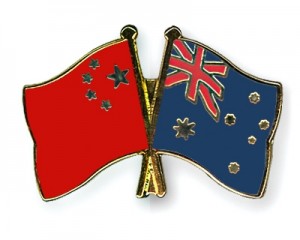 When I was visiting a friend in Melbourne back in 2007, I visited The Chinese Museum – a museum dedicated to the history of Chinese in Australia. What I learned was the first major influx of Chinese immigrants to Australia were much like the Chinese immigrants in America – they came in search of gold, starting in the 1850s
When I was visiting a friend in Melbourne back in 2007, I visited The Chinese Museum – a museum dedicated to the history of Chinese in Australia. What I learned was the first major influx of Chinese immigrants to Australia were much like the Chinese immigrants in America – they came in search of gold, starting in the 1850s
A fellow 8Asians blogger passed along this article from an Australian newspaper which fascinated me and describes and mirrors some of the challenges that I have seen for Asian Americans and our role in American civic duty, representation, politics, and more broadly, in society:
Ideas emerging from the council challenge the stereotype of a politically passive community. They insist Australia confronts its history of anti-Chinese racism and educate its children about it. They question why Asian faces are absent from our TV screens. They challenge political parties – and the Chinese community itself – to deal with the lack of ethnic Chinese Members of Parliament (MPs). And while they say it’s time the Chinese had a voice, they admit the diversity of the community prevents any one group from claiming to represent it.
In a 2006 census, more than 700,000 Australians (almost 4 per cent of the population) – traced a Chinese ancestor – and I am sure, a slightly broader and larger group of Asian Australians. Chinese is the second most spoken language in Australia outside of English! From the article, Asian Australian immigration patterns and struggles also seem to have also mirrored the United States:
“‘We are seen as very good as surgeons, accountants, doctors, but there seems to be a sort of gatekeeping at a cultural level, so the Chinese are not able to have a voice.” Jen Tsen Kwok, who is writing a PhD on Chinese Australian engagement in politics, cautions against any assumption of a homogenous Chinese community. Instead, there are diverse communities made of different strands: descendants of 19th century migrants who survived the White Australia policy; students from Malaysia and Singapore who came in the late 1950s and 1960s; refugees from Indochina in the late 1970s; and the surge of migrants from Hong Kong, Taiwan and China from the late 1980s.
I only spent a week in Australia – in Melbourne and Sydney – and loved my visit and vacation there. I can’t say that I interacted with a lot of locals, let alone any Asian Australians. But I guess that it’s not too difficult to imagine that many Asian immigrants to predominately white majority countries have experienced similar challenges. I think those of you interested to read about such challenges in a different context – in Australlia – you should read the whole article.
To be honest, I don’t think Americans (including myself) knew much about Australia in general except for our preconceived notions from popular culture – from Crocodile Dundee, Men at Work, the 2000 Sydney Olympics and through actors and actresses (all white) such as Russell Crowe, Nicole Kidman, Heath Ledger, Cate Blanchett and Hugh Jackman.








